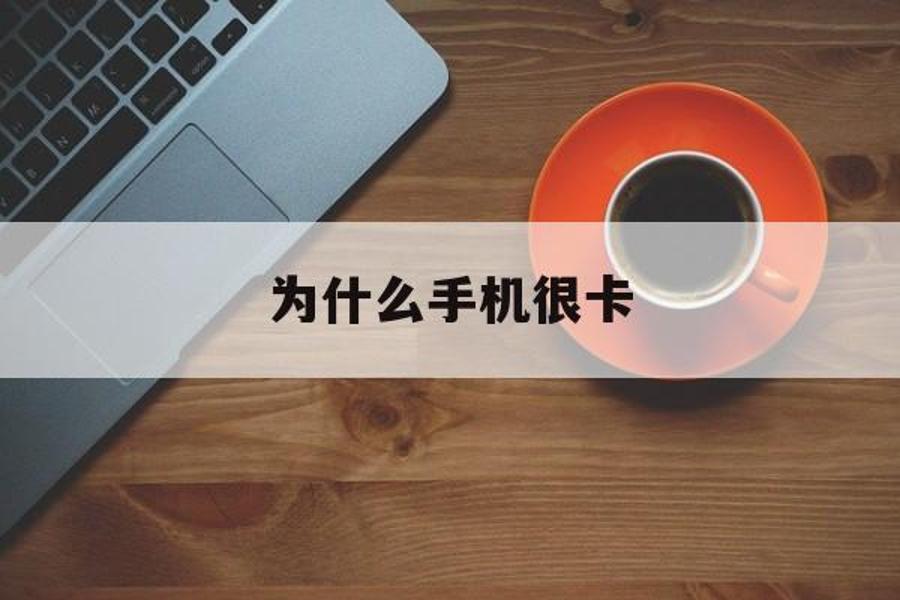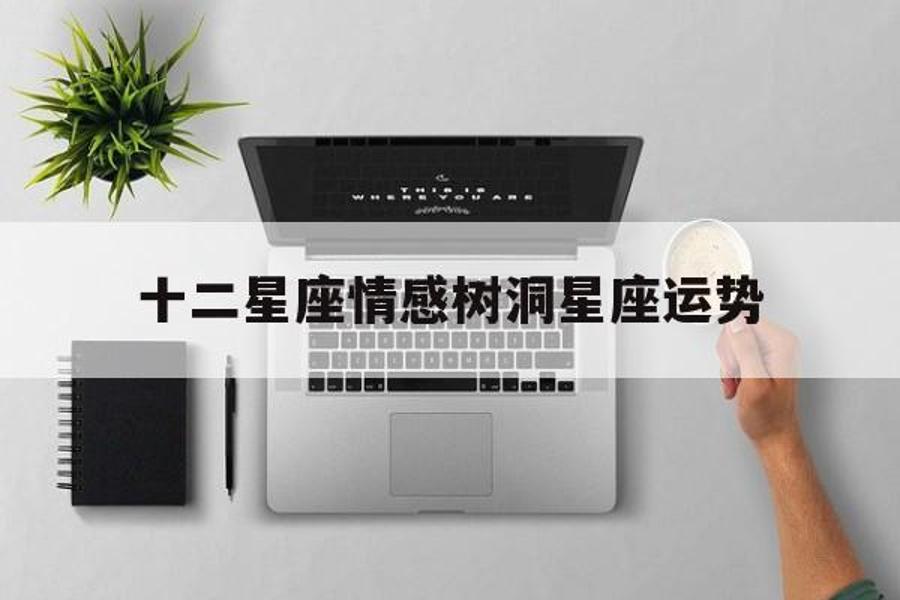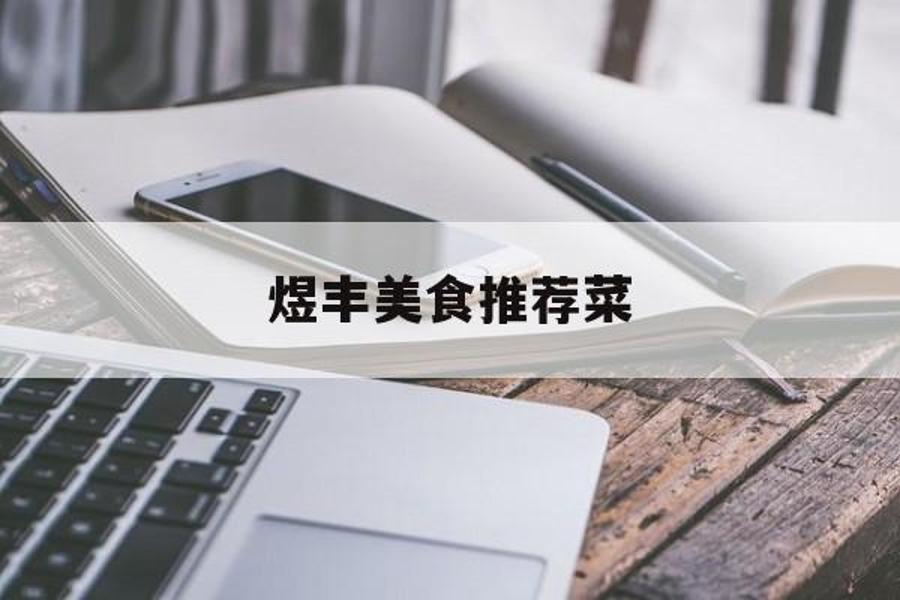1.七年级上册人教版1~9单元英语笔记
一. 词汇 ⑴ 单词 1. 介词:in, on, under, behind, near, at, of 1). in表示”在……中”, “在……内”。
例如: in our class 在我们班上 in my bag 在我的书包里 in the desk 在桌子里 in the classroom 在教室里 2). on 表示”在……上”。例如: on the wall 在墙上 on the desk 在桌子上 on the blackboard 在黑板上 3). under表示”在……下”。
例如: under the tree 在树下 under the chair 在椅子下 under the bed 在床下 4). behind表示”在……后面”。例如: behind the door 在门后 behind the tree 在树后 5). near表示”在……附近”。
例如: near the teacher’s desk 在讲桌附近 near the bed 在床附近 6). at表示”在……处”。例如: at school 在学校 at home 在家 at the door 在门口 7). of 表示”……的”。
例如: a picture of our classroom 我们教室的一幅画 a map of China 一张中国地图 2. 冠词 a / an / the: 冠词一般位于所限定的名词前,用来署名名词所指的人或事物。冠词有不定冠词和定冠词两种。
不定冠词有两个形式,即a和an。a用在以辅音音素开头的词前,如a book; an用在以元音音素开头的字母前,如an apple. a或an与可数名词单数连用,泛指某类人或某物中的一个。
This is a cat. 这是一只猫。 It’s an English book. 这是一本英语书。
His father is a worker. 他的爸爸是个工人。 the既可以用在可数名词前,也可以用在不可数名词前,表示某个或某些特定的人或事物,也可以指上文提到过的人或事物。
Who’s the boy in the hat? 戴帽子的男孩是谁呀? —— What can you see in the classroom? —— I can see a bag. —— Where’s the bag? —— It’s on the desk. ——- 你能在教室里看到什么呀? —— 我能看见一个书包。 —— 书包在哪呀? —— 在桌子上。
3.some和any ①在肯定句中用some.例如: There are some books on the desk.桌子上有一些书。 Lucy has some good books露西有一些好书。
②在疑问句和否定句中用any。例如: Is there any ink in your pen?你的钢笔里有墨水吗? Do you have any brothers and sisters?你有兄弟姐妹吗? There isn’t any water in the glass.杯子里没有水。
⑵记住它们的特殊用法。 ①some亦可用于表示盼望得到对方肯定的答复或表示建议、委婉请求的疑问句中,这一点我们不久就会学到。
例如: Would you like to have some apples?你想吃苹果吗? ②any也可用于肯定句中,表示”任何的”。例如: Any one of us can do this.我们当中任何一个都能做这个。
some 和any的用法是经常出现的考点,希望大家能准确地掌握它们的用法。 4.family family看作为一个整体时,意思是”家庭”,后面的谓语动词be用单数形式 is ;如把family看作为家庭成员时,应理解为复数,后面的谓语动词be应用are。
My family is a big family. 我的家庭是个大家庭。 My family are all at home now. 我的家人现在都在家。
Family强调由家人组成的一个集体或强调这个集体中的成员。home指个人出生、被抚养长大的环境和居住地点。
house指”家”、”房屋”,侧重居住的建筑本身。 His family are all workers. 他的家人都是工人。
My home is in Beijing. 我的家在北京。 He isn’t at home now. 他现在不在家。
It’s a picture of my family. 这是一张我全家的照片。 5. little的用法 a little dog 一只小狗,a little boy 一个小男孩。
little常用来修饰有生命的名词。 *但little还可表示否定意义,意为”少的”,加不可数名词。
There is little time. 几乎没时间了。 There is little water in the cup. 杯中水很少。
⑵ 词组 on the desk 在桌子上 behind the chair 在椅子后 under the chair 在椅子下面 in her pencil-box 在她的铅笔盒中 near the door 在门附近 a picture of a classroom 一个教室的图片 look at the picture 看这张图片 the teacher’s desk 讲桌 a map of China 一张中国地图 family tree 家谱 have a seat 坐下,就坐 this way 这边走 二. 日常用语 1. Come and meet my family. 2. Go and see. I think it’s Li Lei. 3. Glad to meet you. 4. What can you see in the picture? I can see a clock / some books. 5. Can you see an orange? Yes, I can. / No, I can’t. 6. Where’s Shenzhen? It’s near Hong Kong. 7. Let me see.(口语)让我想想看。 see 在这是”明白、懂了”,不可译作”看见”。
例如: 8. Please have a seat. seat表示”座位”,是个名词。have a seat表示”就坐”,也可以说take a seat, 和sit down的意思相同。
三. 语法 1. 名词所有格 名词如要表示与后面名词的所有关系,通常用名词所有格的形式,意为”……的”。一般有以下几种形式: (1). 一般情况下在词尾加”‘s”。
例如: Kate’s father Kate的爸爸 my mother’s friend 我妈妈的朋友 (2). 如果复数名词以s结尾,只加”‘”。例如: Teachers’ Day 教师节 The boys’ game 男孩们的游戏 (3). 如果复数名词不以s结尾,仍加”‘s”。
例如: Children’s Day 儿童节 Women’s Day 妇女节 (4). 表示两个或几个共有时,所有格应加在后一个名词上。例如: Lucy and Lily’s room Lucy 和Lily的房间 Kate and Jim’s father Kate 和Jim的爸爸 动物和无生命事物的名词的所有格一般不在词尾加”‘。
2.七年级上册第七单元到第十二单元短语和重点句子
1. a cup of tea一杯茶
2. Here you are 给你
3. would like想.想要
4. Why not…?为什么不..?
5. Good idea 好主意
6. a bowl of rice一碗米饭
7 .a glass of apple juice一杯苹果汁
8. Wait a moment请稍等
9. something to drink喝的东西
10. something to eat吃的东西
11. take sb’s order记下顾客点的饭菜
12. have dinner with sb和某人吃饭
13. Let me see让我想想
3.七年级英语上册课本1~9单元单词
StarterUnit 1 Good morning!good 好的 morning 早晨;上午 Good morning! 早上好!hi 嗨;喂 hello 你好;喂 afternoon 下午 Good afternoon! 下午好 evening 晚上;傍晚 Good evening! 晚上好!how 怎样;如何 are 是 you 你;你们 How are you? 你好吗?I 我 am 是 fine 健康的;美好的 thanks 感谢;谢谢 OK 好;可以 HB (铅笔芯)硬黑 CD 光盘;激光唱片 BBC 英国广播公司 Alice 艾丽斯(女名) Bob 鲍勃(男名) Cindy 辛迪(女名) Dale 戴尔(男名) Eric 埃里克(男名) Frank 弗兰克(男名) Grace 格蕾丝(女名) Helen 海伦(女名) Starter Unit 2 What’s this in English?what 什么 is 是 this 这;这个 in 用(表示使用语音;材料等)用;以 English 英语;英格兰的;英语的 in English 用英语 map 地图 cup 杯子 ruler 尺;直尺 pen 笔;钢笔 orange 橙子 jacket 夹克衫 key 钥匙 quilt 被子;床罩 it 它 a(an) (用于单数可数名词前,表示未曾提到的) 一(人、事、物) that 那;那个 spell 用字母拼;拼写 please 请 NBA (美国)全国篮球协会 P 停车场;停车位 Kg 千克;公斤 StarterUnit 3 What color is it?color (=colour) 颜色 red 红色(的) yellow 黄色(的) green 绿色(的) blue 蓝色(的) black 黑色(的) white 白色(的) purple 紫色(的) brown 棕色(的);褐色(的) the 指已提到或易领会到的人或事物 now 现在;目前 see 理解;明白 can 能;会 say 说,讲 my 我的 S (尤指服装的尺码)小号的 M (尤指服装的尺码)中号的 L (尤指服装的尺码)大号的 UFO 不明飞行物 CCTV 中国中央电视台 Unit 1My name’s Gina.name 名字;名称 nice 令人愉快的;宜人的 to 常用语原形动词前,表示该动词为不定式 meet 遇见;相逢 too 也;又;太 your 你的;你们的 Ms. (用于女子的姓氏或姓名前,不指明婚否)女士 his 他的 and 和,又,而 her 她的 yes 是的;可以 she 她 he 他 no 不;没有;不是 not 不;没有 zero 零 one 一 two 二 three 三 four 四 five 五 six 六 seven 七 eight 八 nine 九 telephone 电话;电话机 number 号码;数字 phone 电话;电话机 telephone/ phone number 电话号码 first 第一 first name 名字 last 最后的;末尾的 last name 姓 friend 朋友 China 中国 middle 中间的;中间 school 学校 middle school 中学;初中 Gina 吉娜(女名) Jenny 珍妮(女名) Brown 布朗(姓) Alan 艾伦(男名) Tom 汤姆(男名) Mike 迈克(男名) Jack 杰克(男名) Mary 玛丽(女名) Miller 米勒(姓) Linda 琳达(女名) Jane 简(女名) Green 格林(姓) Smith 史密斯(姓) Unit 2 This is my sister.sister 姐;妹 mother 母亲;妈妈 father 父亲;爸爸 parent 父(母)亲 brother 兄;弟 grandmother (外)祖母;奶奶;外婆;姥姥 grandfather (外)祖父;爷爷;外公;姥爷 grandparent 祖父(母);外祖父(母) family 家;家庭 those 那些 who 谁;什么人 oh 喔;啊 these 这些 they 他(她;它)们 well 嗯;好吧 have 有 day 一天;一日;白天 Have a good day! (表示祝愿)过得愉快!bye (=goodbye) 再见 son 儿子 cousin 堂兄(弟、姊、妹);表兄(弟、姊、妹) grandpa (外)祖父;爷爷;外公;姥爷 mom ( = mum ) 妈妈 aunt 姑母;姨母;伯母;婶母;舅母 grandma (外)祖母;奶奶;外婆;姥姥 dad 爸爸 uncle 舅父;叔父;伯父;姑父;姨父 daughter 女儿 here (用以介绍某人或者某物)这就是;在这里 photo 照片 of 属于(某人或者某物;关于(某人或某物) next 下一个(的);接下来(的) picture 照片;图画 girl 女孩 dog 狗 Sally 萨利(女名) Kate 凯特(女名) Paul 保罗(男名)。
4.2014年人教版七年级上册英语Unit1~Unit9的GrammarFocus
2014年人教版七年级上册英语Unit1~Unit9的Grammar Focus (1)Unit 1 My name’s Gina (2)Unit 2 Is this your pencil? (3)Unit 3 This is my sister (4)Unit 4 Where’s my backpack? (5)Unit 5 Do you have a soccer ball? (6)Unit 6 Do you like bananas? (7)Unit 7 How much are these pants? (8)Unit 8 When is your birthday? (9)Unit 9 Do you want to go to a movie?。
5.七年级上册1至6单元英语短语
句型和词组 ( 七年级上 Go for it) Starter Us1-3 1. Good morning/afternoon /evening, Bob! 早上 / 下午 / 晚上好, Bob! 2. Good morning to you. 祝你早上好。
3. –How are you? 你好吗? —I’m fine, thanks. How are you? 我很好,谢谢。你好吗? —I’m OK. 我还好。
4. —What’s this in English? 用英语表达这是什么? —It’s an orange. 它是一只桔子。 —Spell it, please. 请拼写它。
—O-R-A-N-G. —Thank you. 谢谢。 Thank you very much/a lot.—–You are welcome.=That’s all right.=That’s OK. 不用谢。
5. –What color is it? 它是什么颜色? —It’s red. 红色。 6. The key is yellow. 钥匙是黄色 的。
=It’s a yellow key. 它是黄色的钥匙。 7. Nice to meet you. 很高兴见到你。
—-Nice to meet you, too. /Me,too. 也很高兴见到你。 8. How do you do? 你好! —-How do you do? 你好! Unit One 1. —What’s your name? 你的名字是什么? 2. —My name is Gina. 我的名字是吉娜。
=I’m Gina. 我是吉娜。 3. What’s his name?—His name’s Tommy. 4. What’s her name?—Her name is Jenny. 5. ― Nice to meet you. 很高兴认识你。
—Nice to meet you,too. 也很高兴认识你。 6. – What’s her phone number? 她的电话号码是多少? 7. —Her telephone number is 535-2375. 她的电话号码是 535-2375. 8. – What’s his family/last name? 他的姓是什么? —His family/last name is Brown. 他的姓是布朗。
9. – What’s her first name? 她 的名字是什么 —Her first name is Linda. 她的名字是琳达。 U2 1. Is this your pencil? 这是你的铅笔吗? —Yes, it is. 是,它是。
2. Is that your dictionary? 那是你的词典吗? —No, it isn’t. 不,它不是。 3. How do you spell eraser? 你怎样拼写 eraser? 4. Can you spell eraser? 你能拼写 eraser 吗? 5. in the lost and found case 在失物招领箱里 6. call Alan at 495-3539 给艾伦打电话 495-3539 7. school ID card 校牌 8.a set of keys 一串钥匙 U3 1. Is this your daughter? 这是你的女儿吗? —Yes, it is. 是,它是。
/No, it isn’t. 不,它不是。 2. Those are my two brothers. 那些是我的两个兄弟。
3. Is she your aunt? 她是你的姨母吗? —Yes she is. 是,她是。 /No,she isn’t. 不,她不是。
4. family tree 家谱 5.Thanks for the photo of your family. 谢谢你的全家照。 6.Here is my family photo. 这儿是我的全家福。
7.This is my mother. 这是我母亲。 5. a photo of your family=your family photo 你的全家福 U4 1. Where is the backpack? 背包在哪里? —It’s under the table. 它在桌子下面。
2. Where are my books? 我的书在哪里? —They’re on the sofa. 他们阿子沙发上。 3. Where are his keys? 他的钥匙在哪里? —They’re on the dresser. 他们在柜子上。
4. Is it on the floor? 它在地板上吗? —No, it isn’t. 不,它不在。 5. Sorry, I don’t know. 对不起,我不知道。
6. Are they in the drawer? 他们在抽屉里吗? —Yes, they are. 是,他们在。 7. The CDs are in the drawer. 激光唱片在抽屉里。
8. take these things to your sister 把这些东西带去给你姐姐 9. bring it to school 把它带到学校来 U5 1. Do you have a ping-pong ball? 你有乒乓球吗? —Yes, I do. 是,我有。 /No, I don’t. 不,我没有。
2. I/We/You/They have a tennis racket. 我 / 我们 / 你们 / 他们有网球拍。 3. I/We/You/They don’t have a tennis racket. 我 / 我们 / 你们 / 他们没有网球拍。
4. Does he have a soccer ball? 他有足球吗 —Yes, he does. 是,他有。 /No, he doesn’t. 不,他没有。
5. He/She/Tom has a soccer ball. 他 / 她 /Tom 有足球。 6. He/She/Tom doesn’t have a soccer ball. 他 / 她 /Tom 有足球。
7. Let’s play tennis/basketball. 让我们 打网球 / 篮球吧。 8. That sounds good. 那听起来真好。
9. play sports 做运动 10.watch them on TV 通过电视看它们 11.have a great sports collection 有大量的体育收集品 12.every day 每天 13.five volleyballs 五只排球 U6 1. Do they like pears? 他们喜欢梨吗? —Yes, they do. 是,他们喜欢。 /No, they don’t. 不,他们不喜欢。
2. They /I/We like hamburgers. 他们 / 我 / 我们喜欢汉堡包。 3. She likes ice cream. 她喜欢冰淇淋 4. Does she like ice cream? 她喜欢冰淇淋吗? —Yes, she does. 是,她喜欢。
/No, she doesn’t. 不,她不喜欢。 5. running star 跑步明星 6.lots of=a lot of 许多 7.healthy food 健康食品 8. What does he have for lunch? 午餐他要吃什么? —He has chicken, carrots and broccoli for lunch. 午餐他要吃鸡肉,胡萝卜和花椰菜。
9. What do you like for dinner? 晚餐你喜欢吃什么? —I like vegetables for dinner. 晚餐我喜欢吃蔬菜。 10.go on a picnic =have a picnic 去野餐 11.make a list of food to buy 列出需要购买的食物 12.ask questions 问问题 13.answer questions 回答问题 14.I also like strawberries.=I like strawberries, too. 我也喜欢草莓。
6.七年级上册1至6单元英语短语
句型和词组 ( 七年级上 Go for it) Starter Us1-3 1. Good morning/afternoon /evening, Bob! 早上 / 下午 / 晚上好, Bob! 2. Good morning to you. 祝你早上好。
3. –How are you? 你好吗? —I’m fine, thanks. How are you? 我很好,谢谢。你好吗? —I’m OK. 我还好。
4. —What’s this in English? 用英语表达这是什么? —It’s an orange. 它是一只桔子。 —Spell it, please. 请拼写它。
—O-R-A-N-G. —Thank you. 谢谢。 Thank you very much/a lot.—–You are welcome.=That’s all right.=That’s OK. 不用谢。
5. –What color is it? 它是什么颜色? —It’s red. 红色。 6. The key is yellow. 钥匙是黄色 的。
=It’s a yellow key. 它是黄色的钥匙。 7. Nice to meet you. 很高兴见到你。
—-Nice to meet you, too. /Me,too. 也很高兴见到你。 8. How do you do? 你好! —-How do you do? 你好! Unit One 1. —What’s your name? 你的名字是什么? 2. —My name is Gina. 我的名字是吉娜。
=I’m Gina. 我是吉娜。 3. What’s his name?—His name’s Tommy. 4. What’s her name?—Her name is Jenny. 5. ― Nice to meet you. 很高兴认识你。
—Nice to meet you,too. 也很高兴认识你。 6. – What’s her phone number? 她的电话号码是多少? 7. —Her telephone number is 535-2375. 她的电话号码是 535-2375. 8. – What’s his family/last name? 他的姓是什么? —His family/last name is Brown. 他的姓是布朗。
9. – What’s her first name? 她 的名字是什么 —Her first name is Linda. 她的名字是琳达。 U2 1. Is this your pencil? 这是你的铅笔吗? —Yes, it is. 是,它是。
2. Is that your dictionary? 那是你的词典吗? —No, it isn’t. 不,它不是。 3. How do you spell eraser? 你怎样拼写 eraser? 4. Can you spell eraser? 你能拼写 eraser 吗? 5. in the lost and found case 在失物招领箱里 6. call Alan at 495-3539 给艾伦打电话 495-3539 7. school ID card 校牌 8.a set of keys 一串钥匙 U3 1. Is this your daughter? 这是你的女儿吗? —Yes, it is. 是,它是。
/No, it isn’t. 不,它不是。 2. Those are my two brothers. 那些是我的两个兄弟。
3. Is she your aunt? 她是你的姨母吗? —Yes she is. 是,她是。 /No,she isn’t. 不,她不是。
4. family tree 家谱 5.Thanks for the photo of your family. 谢谢你的全家照。 6.Here is my family photo. 这儿是我的全家福。
7.This is my mother. 这是我母亲。 5. a photo of your family=your family photo 你的全家福 U4 1. Where is the backpack? 背包在哪里? —It’s under the table. 它在桌子下面。
2. Where are my books? 我的书在哪里? —They’re on the sofa. 他们阿子沙发上。 3. Where are his keys? 他的钥匙在哪里? —They’re on the dresser. 他们在柜子上。
4. Is it on the floor? 它在地板上吗? —No, it isn’t. 不,它不在。 5. Sorry, I don’t know. 对不起,我不知道。
6. Are they in the drawer? 他们在抽屉里吗? —Yes, they are. 是,他们在。 7. The CDs are in the drawer. 激光唱片在抽屉里。
8. take these things to your sister 把这些东西带去给你姐姐 9. bring it to school 把它带到学校来 U5 1. Do you have a ping-pong ball? 你有乒乓球吗? —Yes, I do. 是,我有。 /No, I don’t. 不,我没有。
2. I/We/You/They have a tennis racket. 我 / 我们 / 你们 / 他们有网球拍。 3. I/We/You/They don’t have a tennis racket. 我 / 我们 / 你们 / 他们没有网球拍。
4. Does he have a soccer ball? 他有足球吗 —Yes, he does. 是,他有。 /No, he doesn’t. 不,他没有。
5. He/She/Tom has a soccer ball. 他 / 她 /Tom 有足球。 6. He/She/Tom doesn’t have a soccer ball. 他 / 她 /Tom 有足球。
7. Let’s play tennis/basketball. 让我们 打网球 / 篮球吧。 8. That sounds good. 那听起来真好。
9. play sports 做运动 10.watch them on TV 通过电视看它们 11.have a great sports collection 有大量的体育收集品 12.every day 每天 13.five volleyballs 五只排球 U6 1. Do they like pears? 他们喜欢梨吗? —Yes, they do. 是,他们喜欢。 /No, they don’t. 不,他们不喜欢。
2. They /I/We like hamburgers. 他们 / 我 / 我们喜欢汉堡包。 3. She likes ice cream. 她喜欢冰淇淋 4. Does she like ice cream? 她喜欢冰淇淋吗? —Yes, she does. 是,她喜欢。
/No, she doesn’t. 不,她不喜欢。 5. running star 跑步明星 6.lots of=a lot of 许多 7.healthy food 健康食品 8. What does he have for lunch? 午餐他要吃什么? —He has chicken, carrots and broccoli for lunch. 午餐他要吃鸡肉,胡萝卜和花椰菜。
9. What do you like for dinner? 晚餐你喜欢吃什么? —I like vegetables for dinner. 晚餐我喜欢吃蔬菜。 10.go on a picnic =have a picnic 去野餐 11.make a list of food to buy 列出需要购买的食物 12.ask questions 问问题 13.answer questions 回答问题 14.I also like strawberries.=I like strawberries, too. 我也喜欢草莓。
7.7年级上1
When early man invented clothes, he probably wanted to keep warm. I am sure he never intended that it should become as elaborate as it has become today. For many a year,traditional clothes and modern clothes have been in competition as to which of them make the wearer more beautiful. But it does seem that a lot of modern clothes are simpler and more practical. Perhaps we are moving back to the age of cavemen who wore clothes for practical purposes.
Modern clothes are definitely more practical as against traditional clothes. Almost all people now wear modern clothes. Nowadays even more and more people wear casual clothes. Jeans are everywhere except at formal parties.T-shirts are common, too. They look comfortable and fashionable. However, there are also a lot of people who take the trouble to dress well in formal clothes like shirts, trousers and suits. I find them smart, too.
But then, it is important to hold on to our topic. In my opinion, each type of dress has its place. Modern clothes are ideal for most situations, while casual clothes are worn more freely. As to traditional clothes, they must be worn for special occasions.








